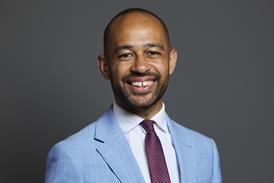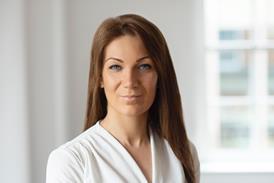Claire Hamon, director of business information systems and chief information officer at the Crown Prosecution Service, talks to Rupert White about how IT is helping deliver justice and how lawyers being informed faster is the bedrock of her vision
Claire Hamon runs IT for the Crown Prosecution Service (CPS). This is no simple task - with more than 8,000 users across the country, it is equivalent to being head of IT at a large international company.
The CPS employs more than 2,800 lawyers; the systems Ms Hamon oversees connect CPS offices, police charging centres, courts and remote workers, across 240 locations in the 42 CPS areas. She may also have overseen one of the few major government IT projects that has not yet come in enormously over-budget and that, she says, delivers on its design.
The CPS now uses a case management system called Compass, which will, in theory, let CPS users, prosecutors and eventually outside lawyers access information from various areas in the criminal justice system in a 'joined-up' way. When asked what she is most proud of over her three-and-a-half year tenure at the top of the CPS's IT tree, this is what she cites.
'It's probably one of the most significant cultural change programmes,' she told the Gazette. 'We took the CPS from four years ago, prior to my time, when there weren't PCs on desks, to be in the position where we have a national case management system which is universally used and is adding value in the business process.'
She remains proud of it, she said, because of its flexibility. 'That system has remained current. Having a system that's been implemented but actually changes and moves with business, not just with legislative change but is also responsive to user feedback, shows me that what we implemented is correct - and that's very important.'
Like many of her IT chief peers, Ms Hamon is well versed in the kind of jargon that is the lifeblood of management consultants. But beneath jargon such as 'joined-up government', turning the CPS into a modern institution and participating in the joining up of the criminal justice system, is doubtless a mammoth task.
'There's a large amount of work that IT people undertake which is around whether or not those systems should be connected,' she said. 'What I've enjoyed is being involved in an environment where it's not possible to just plug systems together, but we're able to join them up. I also think that the technology and sophistication of IT is really demonstrated when you can take two things which are in an entirely different language, different configuration and different set-up and make it seem as if they are the same thing, because as far as the user's concerned, they are.'
But this does not mean all is as it should be. Another vital element in the joining up of the criminal justice system's various new case management systems is Libra, the magistrates' courts system that is over-budget and behind schedule - it is only 'live' in nine courts in the land. In terms of security, the government's push for the adoption of its Secure eMail system might be working for youth offending teams communicating with institutions, but its adoption by defence lawyers has been slow.
'The reality is, of course, that we're not quite there - in terms of the ability or the ease with which we can interface - but the work that we've done within criminal justice, we're moving towards there,' said Ms Hamon.
She pointed to CJS Exchange, the systems hub, as achieving the basic aims of a joined-up world of criminal justice system IT (CJIT). 'But you're always going to have the data ownership issues, and therefore you have to think very carefully before you plug something in.' But, fundamentally, the future of the criminal justice system is in sharing information, hopefully seamlessly, between agencies and users.
So how does this affect lawyers' lives? 'If I'm a defence lawyer... I'm going to get something that's in a format which means I might get it on-line, I might get it more quickly, I might be able to manipulate it. Those things are very important and are already changing the way in which things work. It's wonderful to see technology in the court facilities, and it's great to see the way in which that's used.'
Except, of course, that many courts exist in a less than modern environment. Though this might be true, said Ms Hamon, what the CPS does on the ground is changing the criminal justice system for the better.
'The important areas for me are around the facilities that we give so that certain witnesses and victims don't have to go into court,' she said. 'You go into some courtrooms and you've practically got candles... the juxtaposition is what's fascinating to me. You've got the most modern technology, in some cases, in facilities which are archaic. But we are dealing with that.'
Does this mean a better world? This is no glib question - the CJIT programme's stated goal is to enable 'the building of a fairer and more just society through the delivery of swifter justice'. Ms Hamon is confident the CPS can help this come about.
'I'd say that the way we're working is already changing their lives. Technology is already playing a significant part in ensuring that justice is done. We're communicating much more regularly and more frequently with defence lawyers through e-mail, and the like. From the CPS's point of view, the use of technology makes sure that we achieve better outcomes in court.'
From the use of electronic presentation of evidence to communicating and accessing information across agencies, the CPS sees itself as part of a criminal justice system future in which lawyers will be more informed, faster, at less cost. This has real consequences on the ground, said Ms Hamon.
'The way you see justice to be done is a direct consequence of how I treat you and the support I provide to you during the process. Particularly for us, that's very important. But actually the most important thing is public confidence. How do you get public confidence? By doing a good job and making sure you support people. It's the way that you do the job that we're here to do that actually provides the evidence that shows that we're doing things in the right way.'
Charity Explorer provides a reputable reference tool for solicitors, will-writers and their clients who want to leave a legacy or charitable gift.
Visit Charity Explorer
Whether you are looking for legal expert witnesses, legal training/CPD providers, international law firms, administration of estates, legal software suppliers, barristers chambers or any other general legal service, the Legal Services Directory will provide a suitable option.
Visit Legal Services Directory

























No comments yet